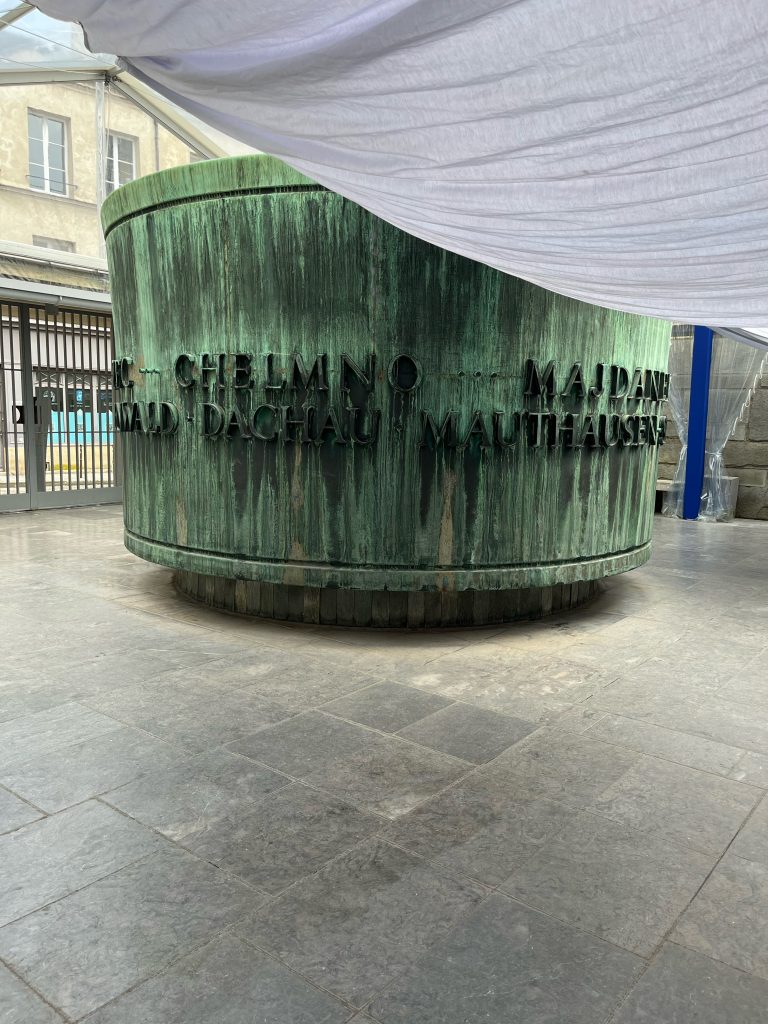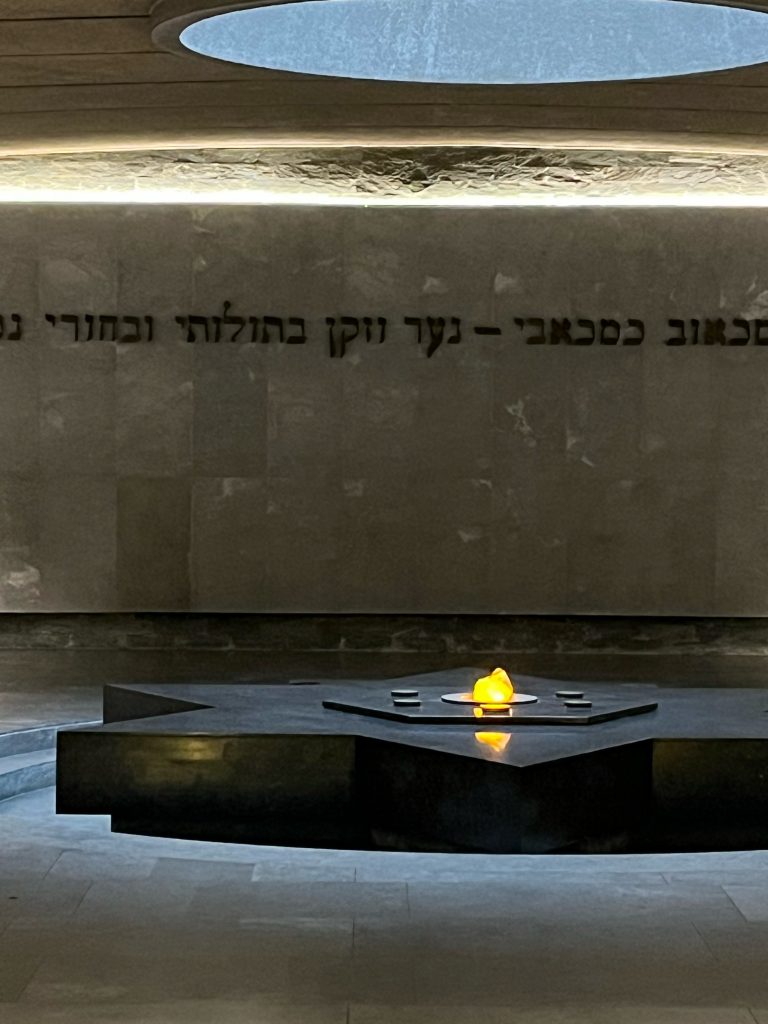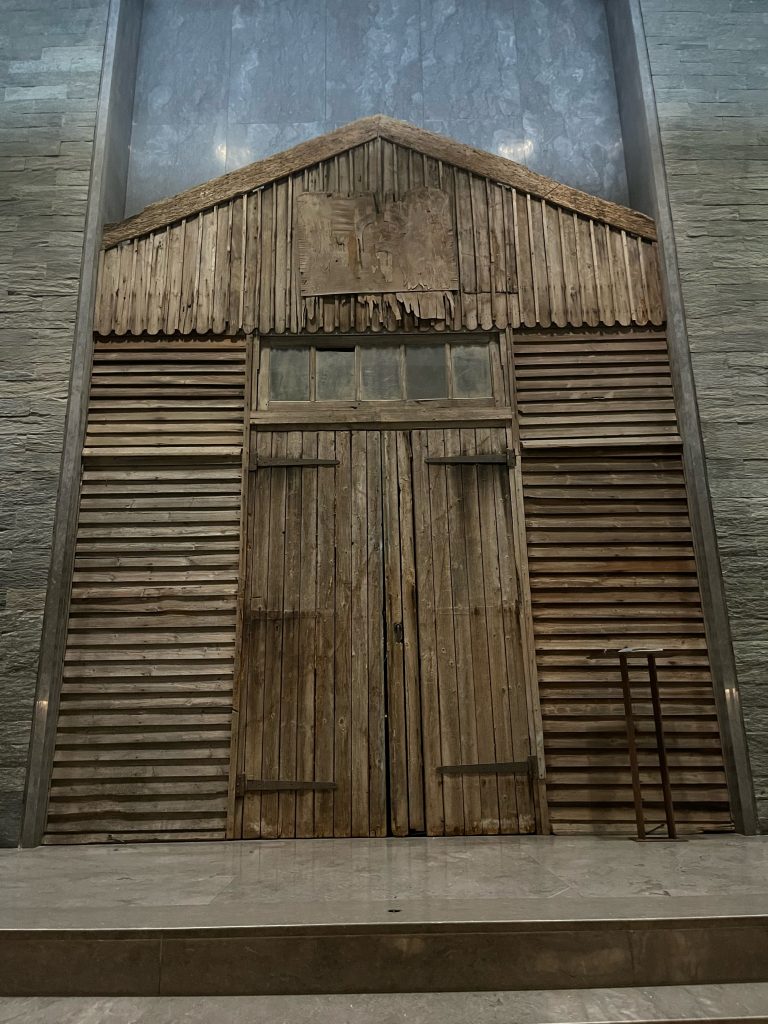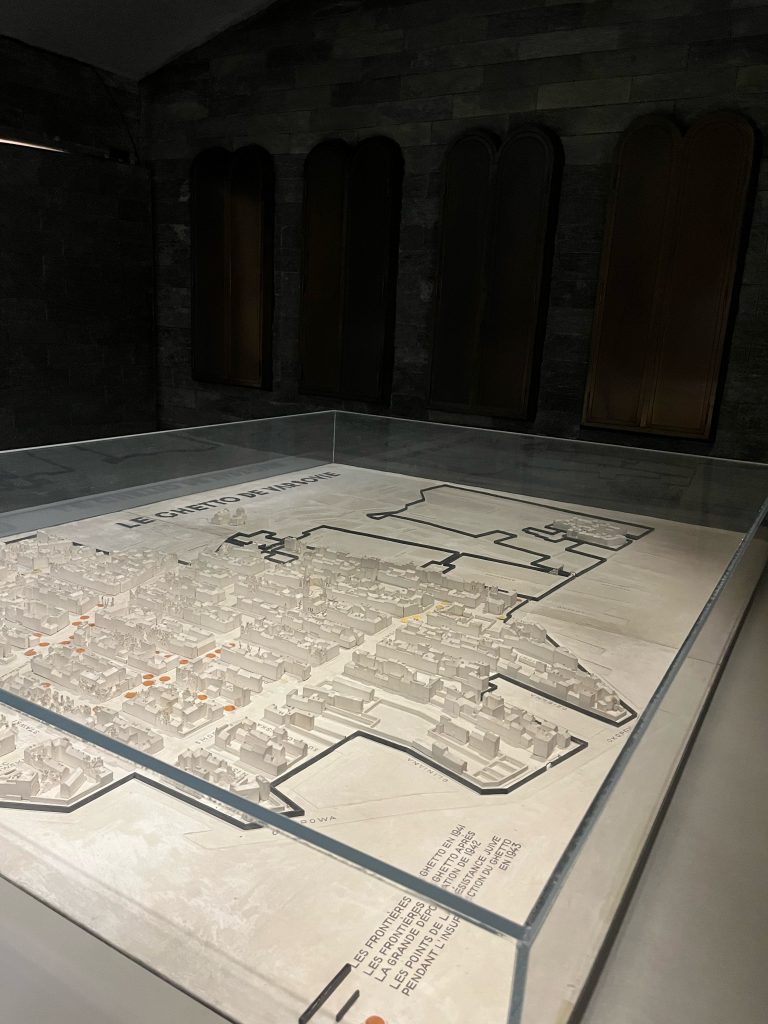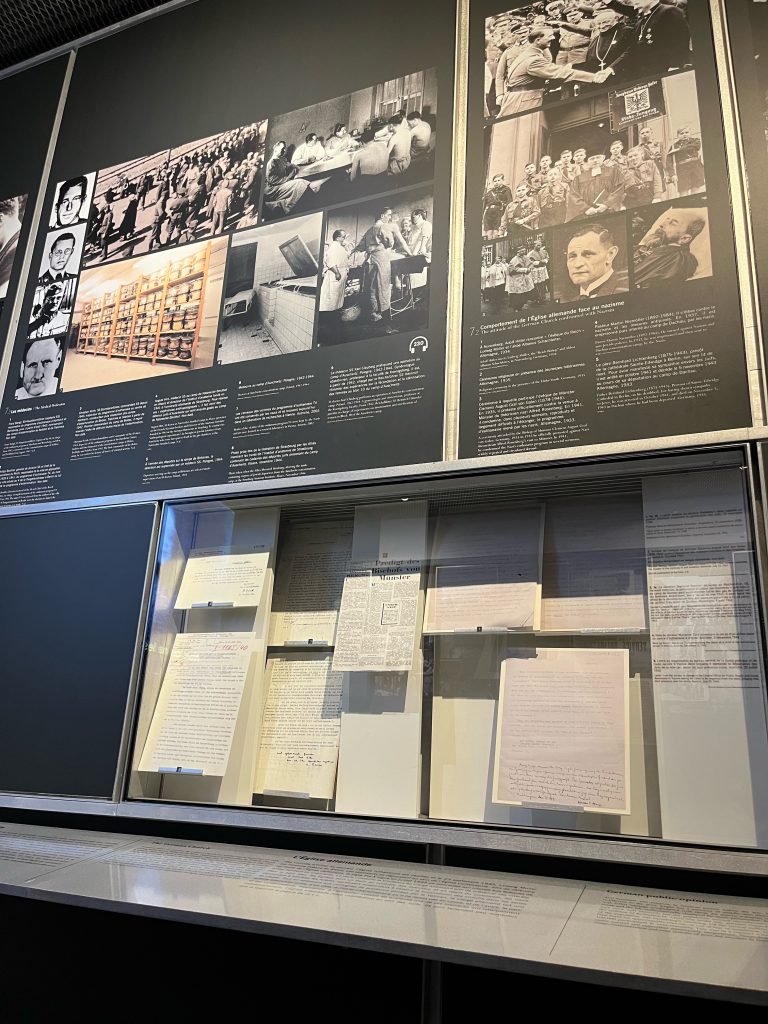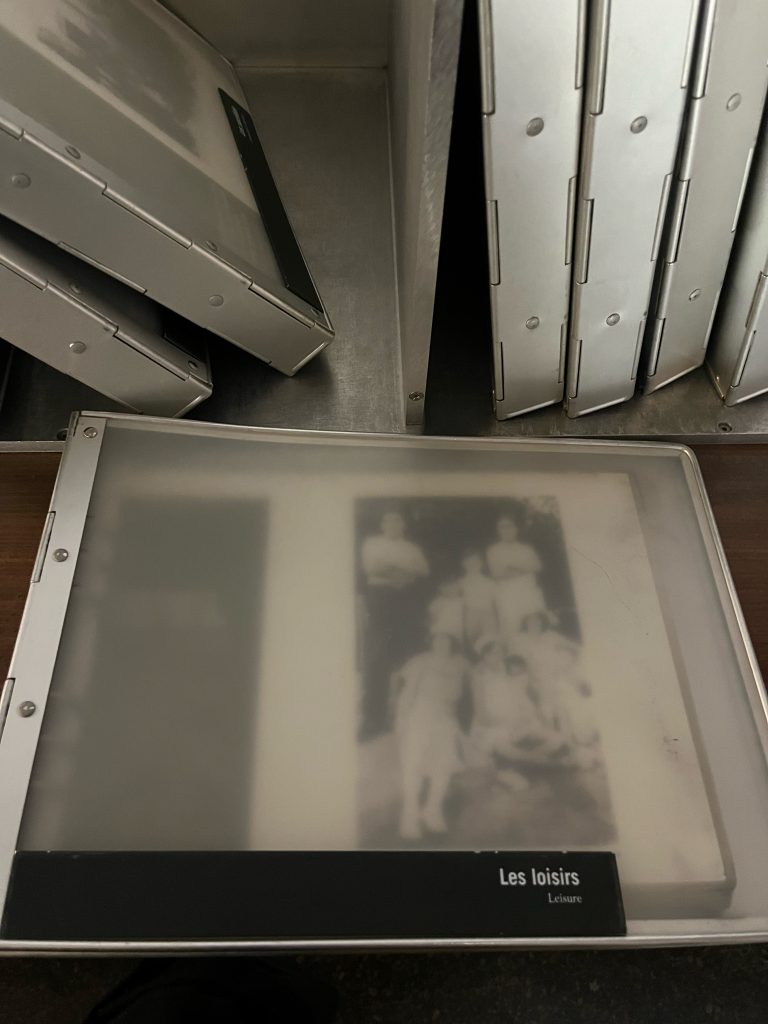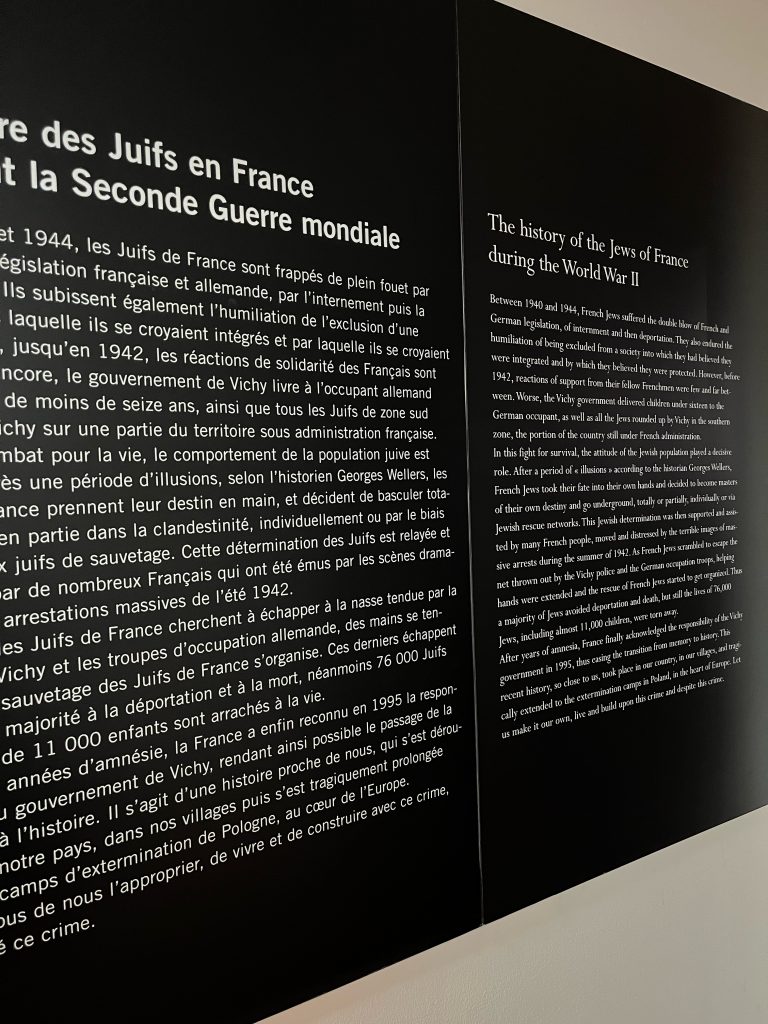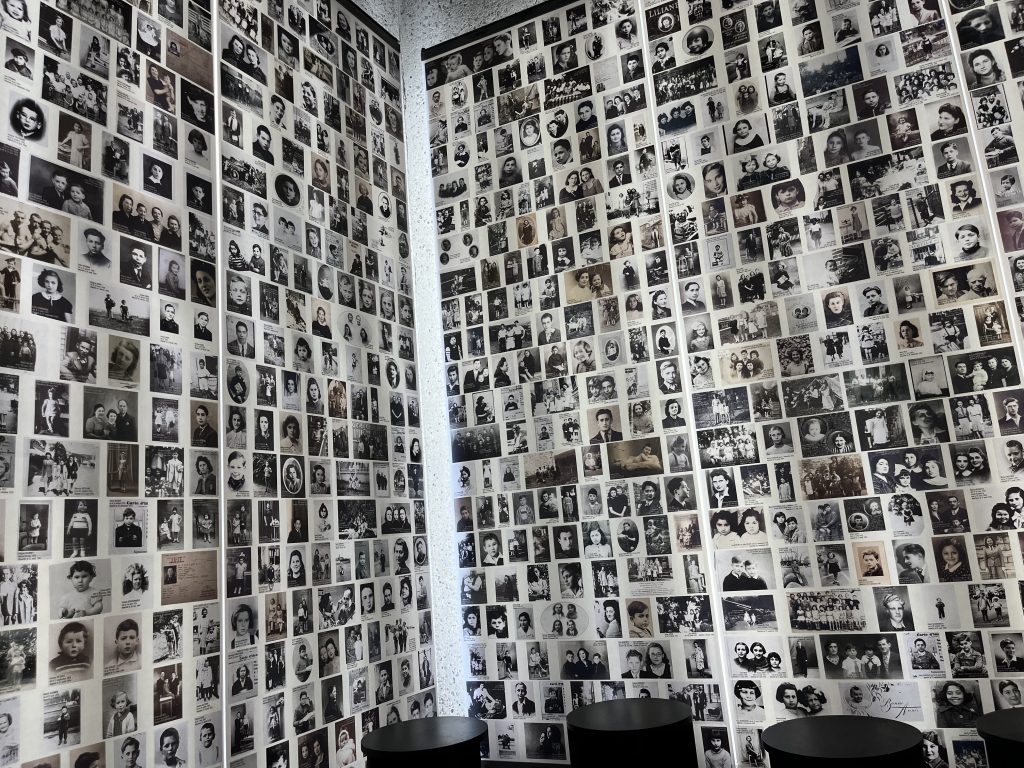Essay and photo documentation by Keeley Wade.
I chose to focus on the use of diverse mediums throughout the Shoah Memorial and Museum. More specifically, I chose to document the primary mediums that the permanent exhibit used and to consider the impact of each medium on the exhibit as a whole. I think it has become increasingly common for museums to employ a wide variety of mediums in their exhibitions, and the Shoah Memorial and Museum is no exception to this. The permanent exhibit is primarily made up of text and images on the walls. The text is generally given in both French and English, which are each given in distinct fonts, so the guest can easily find the language of their choice in any given section (e.g. French text in a sans serif font, English text in a serif font). In addition to the wall text and images, there were a few areas where booklets containing text and images were available for guests to read. While the booklets created some tactile and individual interest for the guest (i.e. a small item that they could hold and read on their own), the merits of the booklets seemed minimal. In addition to the images and scans of primary sources on the wall and in the booklets, occasional cases held the actual versions of primary sources. As a guest, I appreciated the chance to see “real” artifacts, and the fact that they were relatively few in number kept energy and interest high. Overall, the biggest issue I found with the text portions of the exhibit were the faulty and inconsistent translations. Some of the translations contained errors that did not impede meaning (e.g. “jews” was not capitalized in some instances), others contained errors that did impede meaning (e.g. text saying the museum sought to “build upon the crimes against Jews”), and some sections of text simply did not have translations. Additionally, there were several instances of audio-visual content throughout the museum. None of these had captions, which poses accessibility issues for Deaf and hard of hearing individuals, nor translations. While a fully French exhibit in France is not out of line at all, it seems short-sighted to translate content so inconsistently. Additionally, some of the purely audio content did not play. From a functional perspective, the Shoah Memorial and Museum’s decision to distribute audio-visual sections with seating throughout the exhibit (i.e. the mini documentary theaters) gave guests ample opportunity to sit and rest while still enjoying the exhibit. The photo wall gave guests another opportunity to sit while observing a critical part of the exhibit. Overall, I found the diversity of mediums employed by the Shoah Memorial and Museum’s primary exhibit to be beneficial in terms of engagement and guest connection, but some mediums were unnecessary or substantially flawed in their execution (e.g. superfluous booklets, non-working audio content).
